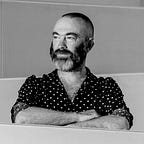Selling architects: analogy more powerful than reality
An artful analogy is a powerful way to connect at an emotional and rational level with your client and characterise your value.
ommunicating hard, or unfamiliar, concepts to an audience is challenging. Making the unfamiliar familiar, requires effort and skill. And often analogy will be the best way to approach the task.
The art of analogy
Steve Jobs was a master of analogy. It allowed him to describe new things Apple made that were unfamiliar and turn them into something meaningful. Whilst also describing new concepts and ideas, so that they might be easily understood. But analogy is not just for new tech. The same principles apply to anything challenging for the intended audience to understand or engage with.
An analogy should tell a story. A story explaining what it’s for and how it will solve your customer’s problem(s). Tony Fadell suggests a good story has three elements:
- It speaks to your customer’s, or client’s, rational and emotional sides;
- It simplifies a complicated concept; and
- It focuses on the “why”, reminding the client of their problem.
And it all begins with empathy.
Understanding your client, their needs, values and problems. In doing so connecting with them at an emotional and rational level. Presenting an irresistible vision.
The best analogies are a shortcut to understanding. Beginning with a misapprehension, and ending with comprehension. And not only comprehension, but engagement and connection.
Consider one feature of Tony Fadell’s Nest that calculated and anticipated community peak power loads (with more expensive rates), then proceeding to pre-cool or pre-heat the house before the peak, saving the user money. That took me just over 20 words to describe it in an ungainly way. They described it in 3 words, using an analogy, they called it “Rush Hour Rewards”. There was more detailed info available on their website, but it’s a pretty compelling analogy just as it is.
Analogy for architects
Architects constantly battle to describe their value so that they might differentiate themselves from building designers, or substantiate their fees. These conversations often stray into territory the clients aren’t familiar with or the efficacy of the offer is unclear. It’s a missed connection and clients are forced to either take a leap of faith based upon other parameters or they go elsewhere.
But what if they went down an analogous path? One that stays in familiar territory and the value of what they’re offering is clear.
Architect = Chef
The difference between a highly skilled architect and a building designer or a less skilled architect…
…it’s like the difference between the cook and the chef. While these terms are often used interchangeably, there is an important nuance. The chef is a trailblazer, the person who invents recipes. He knows the raw ingredients and how to combine them. The cook, who reasons by analogy, uses a recipe. He creates something, perhaps with slight variations, that’s already been created.
Chefs understand ingredients, their flavour profiles, how they might be combined or manipulated to create new and exciting textures or flavours and they’re able to utilise them without recourse to a recipe. They create experiences and stories around the food as well as build a community around them offering far more than food to eat. The chef has knowledge and wisdom, the cook just has know-how and recipes. Architects are analogous to chefs.
By and large, people perfectly understand the difference between a chef and a cook. And that differentiation can be harnessed as an analogy, distinguishing good architects from designer. It’s not a big leap. Most architects could adapt and customise the analogy to best describe their own value and strengths. Building a bridge for their clients from misapprehension to comprehension and an emotional engagement.
It’s just one string…
to your bow.
Analogy only gets you so far. Architects still need to get better at telling their story and selling their work. Analogy is just one of many tools required in order to get better at “selling architects”.
[Note: this is a substantial rewrite of a previous post in April 2021.]
Michael is an Architecture Leadership Coach
Supporting architects in mastering a creative model of leadership to build a more adaptable and efficient practice.
Unleash the collective energy, passion, and capabilities of your people.
Find him at Unmeasured
